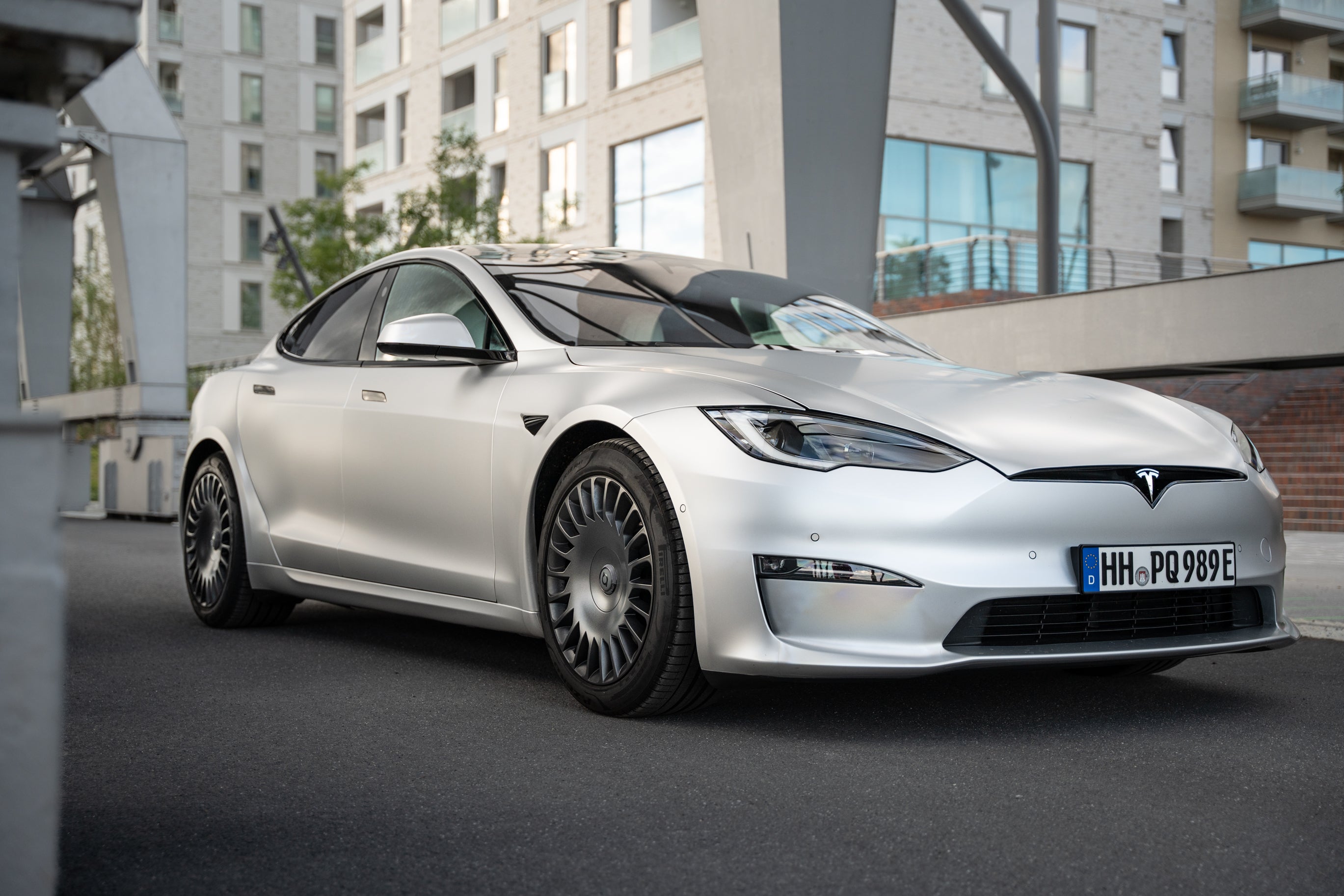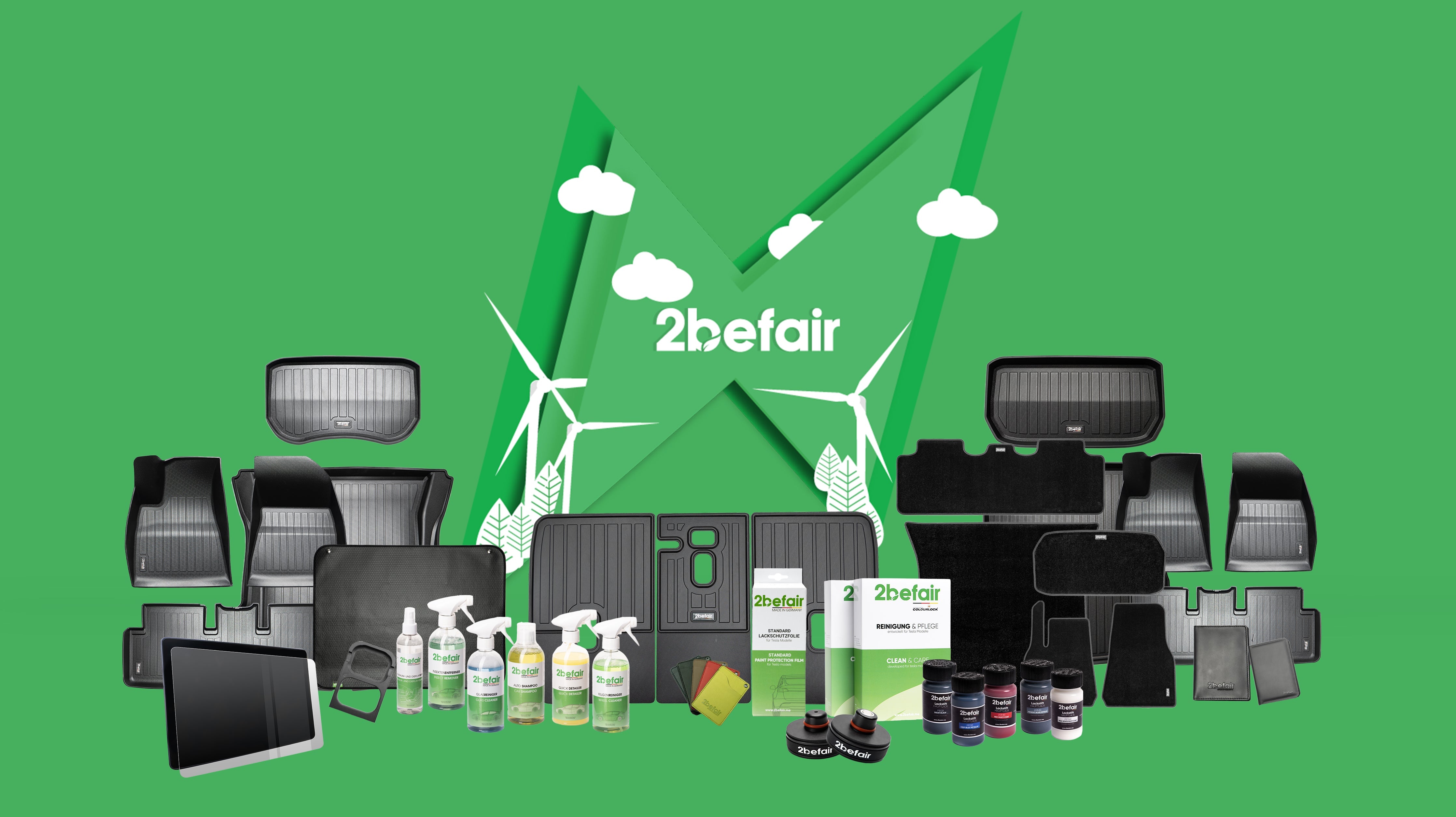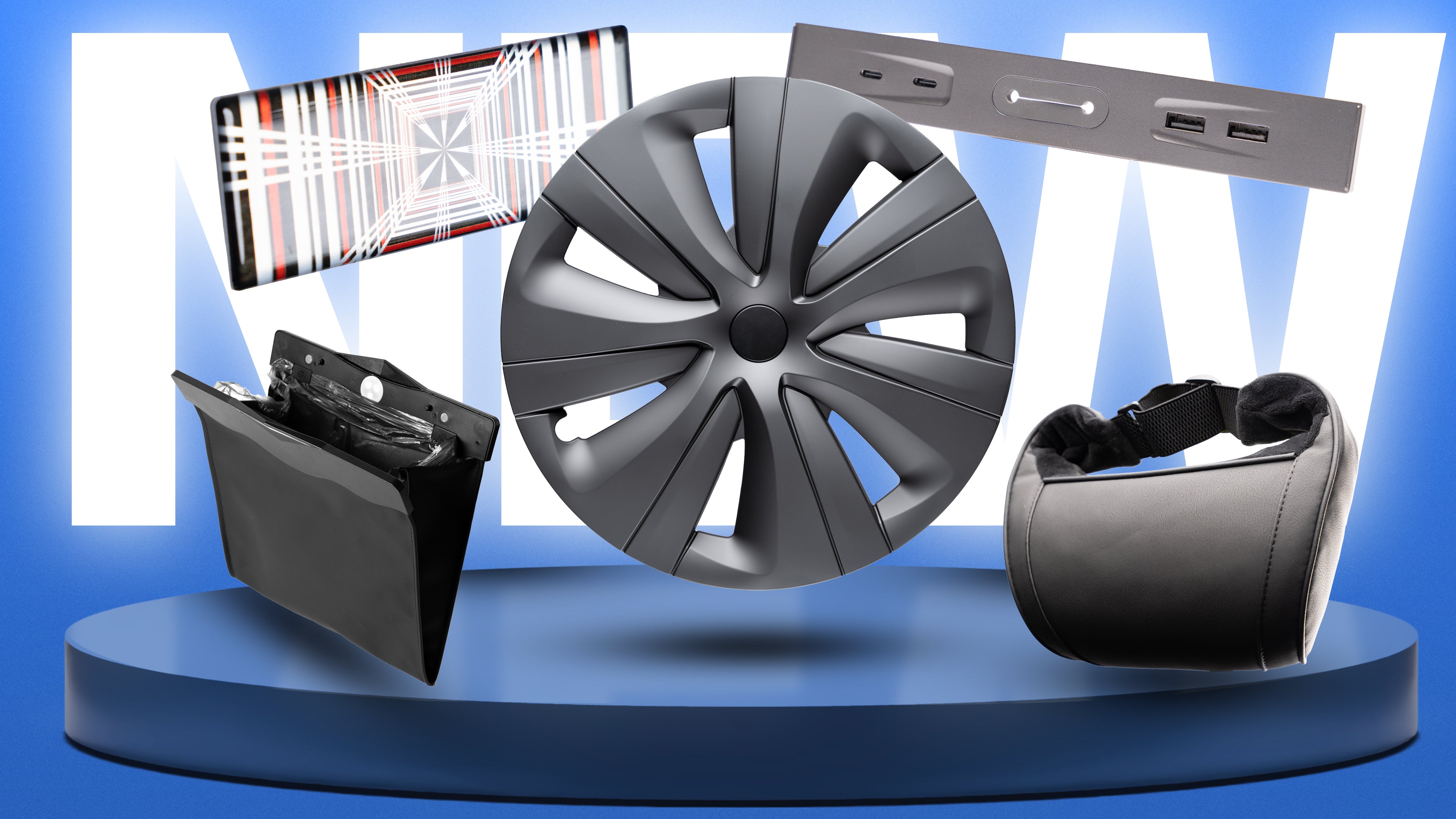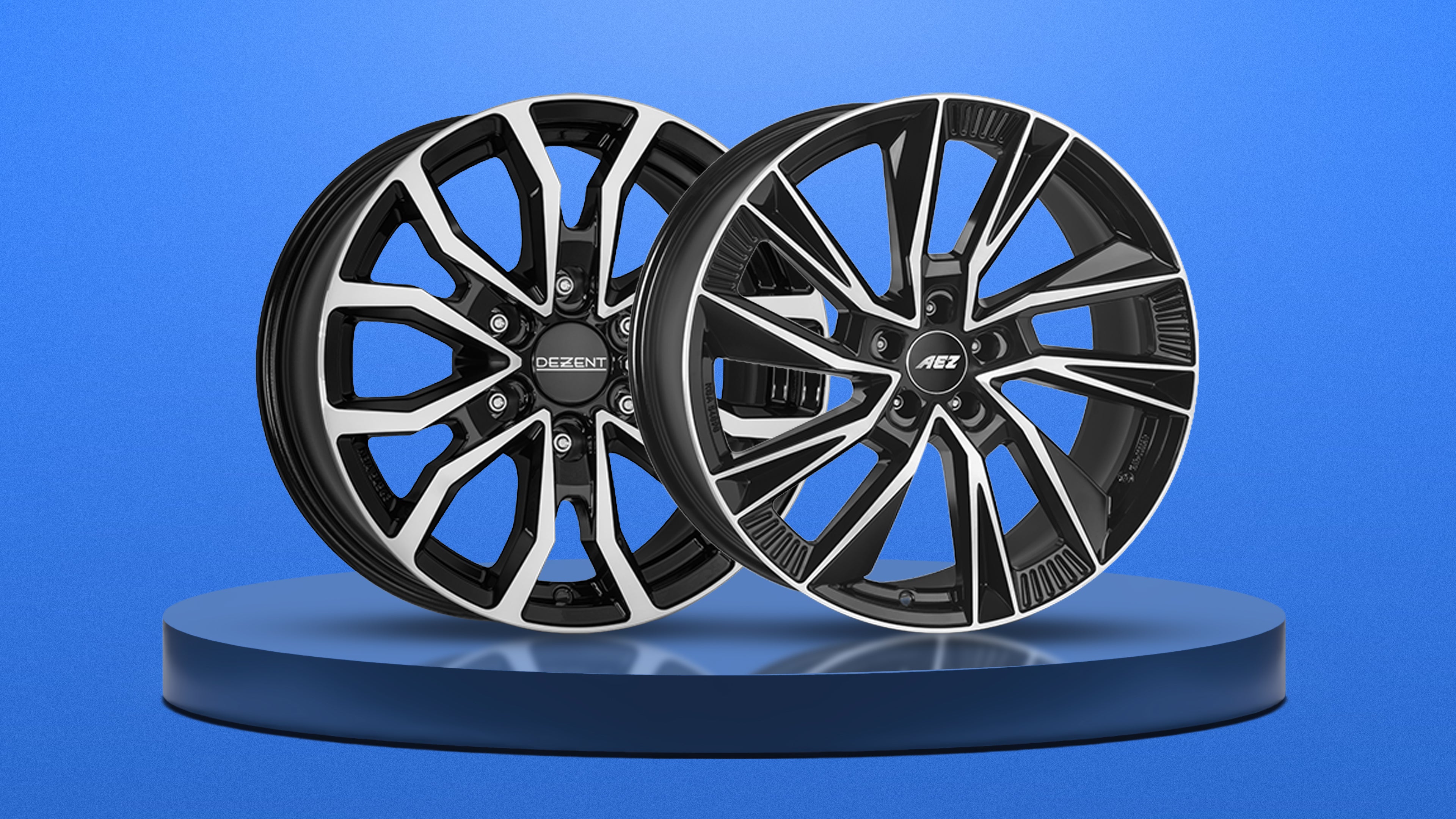In a world that is increasingly focusing on sustainable mobility, the charging infrastructure for electric vehicles plays a crucial role. As a pioneer in the electric vehicle industry Tesla has made an important contribution to promoting electromobility with its Supercharger network. Since the start of production of the Tesla of the Model S in 2012 and later the Model X, the Tesla also built its own fast-charging stations, from Tesla called "Superchargers". These are for Tesla-drivers, these have now become an indispensable part of the long-distance network. With over 50,000 Tesla superchargers around the world, they make it possible to cover very long distances in an electric car. But what exactly are Tesla superchargers, how do they work and what are the differences between the various versions? In this blog post, we will give you a comprehensive overview of everything you need to know about the Tesla Superchargers - from the technical specifications and usage to the costs. Regardless of whether you already Tesla-owner or just want to find out more about the future of electric mobility, you'll find all the relevant information here. Immerse yourself in the world of Tesla superchargers and find out how they are revolutionizing the way we charge our vehicles.

What is a Tesla supercharger?
A Tesla Supercharger is a high-speed charging network that is specially designed for Tesla-vehicles. Since its introduction in 2012 Tesla continuously expanded its Supercharger network to Teslaowners to enable long-distance driving. The Supercharger stations are strategically located around the world and enable fast and efficient charging of the Tesla-vehicles.
Exclusivity for Tesla-vehicles
Originally, the Supercharger network was exclusively Tesla-vehicles. This exclusivity was an important advantage for Teslaowners who did not want to put up with long charging times on long-distance journeys. The stations are specially tailored to the needs of Tesla-vehicles and offer a charging capacity that is higher than the standard charging points for other electric vehicles.
In the early days of the Supercharger network Tesla even offered free access to the charging stations as an incentive to purchase its vehicles. However, this changed over time when Tesla began to charge for the use of the Supercharger network and introduced various charging models.
The Supercharger network consists of different versions of charging stations that offer different charging speeds and features. The following sections describe these different versions and their features in more detail.
Opening for other electric vehicles
Good news for electric vehicle owners: Tesla has opened up all Supercharger charging stations to vehicles from other brands. This means that owners of electric cars from other manufacturers can now also benefit from the tried-and-tested Supercharger network. This opening is an important step in encouraging more drivers to switch to electric mobility by giving them access to an established and widespread charging infrastructure network.
Requirements and access
For electric vehicles of other brands to be able to use the Superchargers, they must have a CCS charging connection that supports the communication and safety protocols of Tesla supported. Tesla The company monitors the locations closely to avoid bottlenecks and use user feedback for future adjustments.
Use and payment
The Supercharger charging stations can be used for other electric vehicles via the Tesla app (version 4.2.3 or higher). There, drivers can start a charging process, find available charging stations and conveniently process payment via the app. Alternatively, payment can be made directly at the Supercharger with a major credit card or via mobile payment services.
Membership and benefits
NonTesla-owners can take out an optional Supercharging membership to benefit from discounted charging prices at selected locations. This membership applies to all of the owner's electric vehicles and is not mandatory in order to use a Supercharger.
Future development
Tesla plans to continuously expand the Supercharger network to meet the increasing demand for charging options for electric vehicles. Opening up the Supercharger charging stations to other electric vehicles is part of the strategy to promote electromobility worldwide and ensure efficient use of the charging infrastructure.
Types of Tesla Superchargers
Tesla has developed different versions of its Superchargers over the years to continuously improve charging capacity and speed. Here is an overview of the most important versions:
V1 Supercharger
- Maximum charging capacity: Up to 120 kW
- Power sharing: Each connection offers dedicated power
- Number of vehicles charging simultaneously: 2 vehicles per charging station
Special features: Ideal for the early days of the Tesla Supercharger network, strategically placed along highways and in urban centers.
V2 Supercharger
- Maximum charging power: Up to 150 kW
- Power sharing: Two connections share an output of up to 150 kW
- Number of vehicles charging simultaneously: 2 vehicles per charging station
Special features: Extended to main roads and highways for fast and flexible charging.

V3 Supercharger
- Maximum charging power: Up to 250 kW
- Power sharing: Dynamic adjustment of power depending on load
- Number of vehicles charging at the same time: Dynamic adjustment based on capacity utilization
Special features: Introduced with liquid-cooled cables for improved efficiency, designed for main roads and busy highways.

V4 Supercharger
- Maximum charging power: Up to 350 kW (future expandability to 650 kW)
- Power sharing: Optimized system for efficient use of energy
- Number of vehicles charging simultaneously: Dynamic adjustment to maximize charging capacity
Special features: Designed for major highways worldwide, longer cables for improved flexibility and support for credit card payments.

Urban Supercharger
- Maximum charging power: Up to 72 kW
- Power sharing: Lower power output for urban environments
- Number of vehicles charging simultaneously: 1 vehicle per charging station
Special features: Specially developed for urban areas to optimize space and ensure reliable charging in parking garages and shopping centers.

Mobile Supercharger
- Possible applications and capacity: Portable units for temporary installations
- Special features: Can be used flexibly for temporary events or emergencies to extend the range of the Tesla-charging network.
Comparison of the Supercharger versions
|
Supercharger version |
Max Power Output |
Power Sharing |
Number of vehicles charging simultaneously |
Max Charging Speed |
|
V1 |
Up to 120 kW |
Dedicated |
2 |
Up to 120 kW |
|
V2 |
Up to 150 kW |
Split |
2 |
Up to 150 kW |
|
V3 |
Up to 250 kW |
Dynamic |
Variable |
Up to 250 kW |
|
V4 |
Up to 350 kW |
Optimized |
Variable |
Up to 350 kW |
|
Urban |
Up to 72 kW |
Low |
1 |
Up to 72 kW |
How fast are Superchargers?
The speed at which Tesla Superchargers charge electric vehicles is an essential aspect of the user experience and a key factor for long-distance travel with electric vehicles. Each generation of Tesla Superchargers offer different charging capacities and speeds, which have been continuously improved to provide drivers with an efficient and reliable charging solution. This section explains in detail how charging times differ between the different Supercharger versions and what factors play a role, including battery condition, vehicle model and environmental conditions. Learn more about the evolution of Superchargers and their contribution to the advancement of electric mobility.
V1 Supercharger: This older version offers a maximum charging capacity of up to 120 kW per vehicle. Although it was introduced at the beginning of the Tesla Supercharger network was revolutionary, charging times are longer compared to newer versions.
V2 Supercharger: With a maximum output of up to 150 kW per vehicle, V2 Superchargers significantly reduce charging times compared to V1. They are still widely used on main roads and highways.
V3 Supercharger: This version introduced dynamic power adjustment of up to 250 kW, depending on the number of vehicles charging at the same time. The liquid-cooled cables improve charging efficiency and significantly reduce the time spent at the charging stations.
V4 Supercharger: In the future, the output will increase to up to 350 kW per vehicle, with a possible extension to 650 kW. This version is known for its high charging speed and the introduction of credit card payments, making it attractive for a wider range of electric vehicles.
Urban Supercharger: Optimized specifically for urban environments, Urban Superchargers offer a maximum charging capacity of up to 72 kW. These charging stations are designed to provide fast charging in limited spaces.
Factors influencing the charging speed
The actual charging time at a Supercharger depends on several factors:
- Battery condition: The current state of the battery, including temperature and remaining charge, affects charging performance. A cold battery charges more slowly than a warm one.
- Vehicle model: Newer Tesla-models are often equipped with improved charging technologies that can enable faster charging times. Older models may have slower charging speeds.
- Environmental conditions: Temperature, humidity and other environmental factors can affect charging performance. Extreme temperatures can affect the efficiency of the battery.
- Station utilization: If several vehicles are charging at a charging station at the same time, the available charging power is divided between the vehicles, which can lead to longer charging times.
Use and costs of Tesla superchargers
The use of the Tesla Superchargers is designed to be simple and efficient for electric vehicle owners. This part of the article explains step by step how to use a Tesla Supercharger, from identifying the nearest location to completing the charging process. It also provides an insight into the cost structure, which can vary depending on charging speed and location. Transparent pricing helps users to better understand and plan the cost of charging their electric vehicles.
How to use a Supercharger?
Find a location: Simply open the Tesla app on your mobile device. Tap on "Location" and then on the charging symbol to find the nearest Supercharger. Alternatively, you can also use our interactive map.
Select a charging station: Once you have selected the desired Supercharger location, drive to an available charging station.
Establish a connection: Connect the charging cable to your Tesla or the compatible electric vehicle. For Tesla-vehicles, authentication takes place automatically via the app. If you have a different electric vehicle, open the Tesla app to start the charging process.
Start the charging process: In the Tesla app, you can start the charging process by tapping on "Start charging process". For vehicles of other brands or without Tesla-account, you can start the charging process directly at the Supercharger charging station.
Monitor the charging process: During the charging process, you can monitor the progress and charge status in real time via the Tesla app.
Complete the charging process: Once the charging process is complete, safely disconnect the charging cable from the vehicle and return it properly to the charging station.
Cost structure of the Tesla Supercharger
The costs for using the Tesla Supercharger vary depending on location, charging speed and time of use.
Here are the main aspects of the cost structure:
- Differences depending on charging speed:
- Tier 1 tariff: This tariff applies to the latest and fastest Supercharger versions (V3 and V4), which offer higher charging speeds.
- Tier 2 tariff: This tariff applies to older Supercharger versions (V1 and V2), which have lower charging speeds.
- Location-dependent costs: Costs may vary depending on geographical location and local currencies.
- On-peak and off-peak rates: Some Supercharger locations offer different rates for peak and off-peak hours to manage usage and avoid congestion.
- Cost display in the Tesla app: The Tesla app shows you the estimated costs before the charging process, based on the current charging speed and the duration of the charging process.
Additional information
- Payment: You can easily pay via the Tesla app by entering your preferred payment method. Credit cards or mobile payment services are also available at some locations.
- Membership: We also offer Tesla offers a Supercharging membership. This allows you to charge at selected locations at discounted prices.
- Cost calculation: Tesla calculates the costs based on the connection time, not the amount of energy charged. This makes the cost calculation transparent and predictable for you as a user.
Special features of the Tesla Supercharger
Tesla Superchargers offer impressive charging performance, but this is reduced when the battery reaches a high level, especially from around 80% capacity. This approach is crucial to maintain battery health in the long term and maximize its lifespan. Here are the main reasons why:
Battery care: Lithium-ion batteries, such as those used in electric vehicles, can be particularly sensitive to high states of charge. In order to extend the service life of the battery, the Tesla-charging system regulates the charging power when the battery is almost fully charged.
- Prevention of overheating: Reducing the charging speed when the battery is high helps to protect the battery from overheating. This is particularly important for frequent fast charging, as this can lead to thermal stress.
- Optimization of charging times: While the first 80% of the charge can be done relatively quickly, the charging time for the remaining 20% increases due to the reduced charging power. This serves to maximize efficiency and avoid unnecessarily long charging times.
Influence of frequent fast charging on battery life
Battery life can be affected by frequent fast charging, although modern Tesla-vehicles have robust battery management systems that optimize these processes. Below you will find some recommendations to maintain battery health in the long term:
- Moderate use: Avoid frequently charging the battery to its maximum charge level. Instead, only charge to 100% when it is necessary for your trip.
- Temperature management: Avoid fast charging in extreme temperatures. High temperatures can have a negative impact on the battery and reduce charging efficiency.
- Regular updates: Tesla Implement regular software updates that can optimize battery performance and improve charging procedures. Make sure your vehicle is always up to date.
- Long-range planning: Plan your trips so that you can charge regularly at Superchargers without pushing the battery to the max. This supports battery health and optimizes charging times.
Safety and availability aspects of Tesla Superchargers
Availability of the Superchargers
Tesla Superchargers are designed to be available around the clock to meet the needs of drivers who want to travel longer distances. Availability can vary by location and depends on several factors:
- Location dependency: The availability of Superchargers can vary depending on geographical location. Urban areas or busy transportation corridors often have more Supercharger stations available, while remote regions may have fewer locations.
- Charging stations per location: Each Supercharger location has a different number of charging stations, each equipped with a charging cable. The availability of a charging station depends on how many vehicles are charging at the same time and how fast the charging takes place.
- Network load: At peak times, demand for Supercharger stations can be high, especially at weekends or during vacation periods. Tesla monitors capacity utilization and works continuously to avoid bottlenecks.
Restrictions in relation to nearby facilities
Tesla often positions Superchargers close to amenities such as restaurants, shopping centers or hotels. This allows drivers to make efficient use of time while charging. Many locations offer additional amenities such as restrooms, seating or Wi-Fi access to make the stay more enjoyable.
Safety aspects during use
- Weatherproofing: Tesla Superchargers are built tough and designed to be weatherproof to withstand the elements. The charging stations are designed for use in a variety of weather conditions, including rain, snow and heat.
- Safety standards: Superchargers meet strict safety standards and are designed to provide a reliable and safe charging experience. The cables and plugs are designed to work safely and efficiently while being user-friendly.
- Monitoring and maintenance: Tesla regularly monitors the safety and functionality of its Supercharger stations. In case of problems or technical questions Tesla-drivers can contact customer service or directly via the Tesla receive support directly via the app.
Future prospects of the Tesla Supercharger
Opening for other electric vehicles
Tesla has recently begun opening its Supercharger networks to other brands of vehicles to promote electric mobility as a whole. This move is part of Tesla's efforts to provide a comprehensive and accessible charging network for electric vehicles. Here are some recent developments and future prospects:
- Pilot projects and tests: Tesla Tesla is currently conducting pilot projects and tests in selected countries to test the integration of other brands of electric vehicles into the Supercharger network. These tests are designed to improve the charging experience for all electric vehicle owners and ensure compatibility with different vehicle models.
- Technological adaptationsIn order to make the Superchargers accessible to other electric vehicles Tesla is working on technological adaptations. This includes the integration of CCS charging ports at Supercharger stations to ensure compatibility with a wider range of electric vehicles.
- Advantages for electric mobilityOpening up Superchargers to other electric vehicles could accelerate the uptake of electric mobility. A widespread and reliable charging network is crucial to minimize potential range and charging infrastructure concerns.
- Expansion and scaling: Tesla plans to continuously expand the Supercharger network and further improve the availability of charging options. Future locations will be strategically chosen to ensure broad coverage and high convenience of use.
- Customer experience and feedback: Tesla takes user feedback into account during the pilot phase in order to continuously optimize the Supercharger experience. This includes monitoring charging speeds, the availability of charging stations and the user-friendliness of the infrastructure.
Conclusion
The Tesla Supercharger network is a cornerstone of electric mobility and has revolutionized the way electric vehicles are charged. From the early V1 and V2 versions to the advanced V3, V4 and Urban Superchargers, the Supercharger network has Tesla continuously invested in the development and expansion of its charging network.
Summary of the key points:
- Development and expansion: Since the introduction of the first Supercharger Tesla has expanded its network to more than 50,000 stations worldwide. Each Supercharger generation has brought improvements in terms of charging speed, efficiency and user-friendliness.
- Technological advancesThe introduction of V3 Superchargers marked a milestone with the introduction of power sharing and liquid-cooled cables. V4 Superchargers will enable up to 350 kW of power in the future and offer longer cables and different payment methods.
- Opening up to other electric vehicles: Tesla has started to open selected Supercharger stations to vehicles from other brands. This step is intended to promote electric mobility as a whole and encourage more drivers to switch to zero-emission vehicles.
- Charging speeds and costsSuperchargers offer different prices depending on the model and charging speed. Tesla-Drivers benefit from lower tariffs and a seamless charging experience thanks to integration with the Tesla-app.
Outlook on the further development of the Supercharger network:
The future of the Tesla Supercharger network promises further expansion and technological innovations. Tesla is working on improving charging speeds, the availability of charging points and the integration of new technologies to make charging electric vehicles even easier and more efficient.
The Supercharger network continues to be crucial for the widespread acceptance and use of electric vehicles worldwide. With each new Supercharger location and each new technology Tesla sets the standard for sustainable mobility and helps to reduce dependence on fossil fuels.
Overall, the Tesla Supercharger network plays a key role in transforming the transportation sector towards a clean and sustainable future. Through continuous innovation and expansion Tesla at the forefront of electromobility and sets standards for the entire automotive industry.
With every kilometer that Tesla-kilometers that vehicles cover at the Supercharger stations, the vision of emission-free mobility becomes reality.
Prefer all the information in a compact video?
Is that too much text for you and would you prefer to see all the relevant information about Superchargers in a video? Then take a look at Nico's Supercharger video, in which he explains everything you need to know in a compact format: Nico Pliquett explains the Tesla Supercharger (V2-4).






































